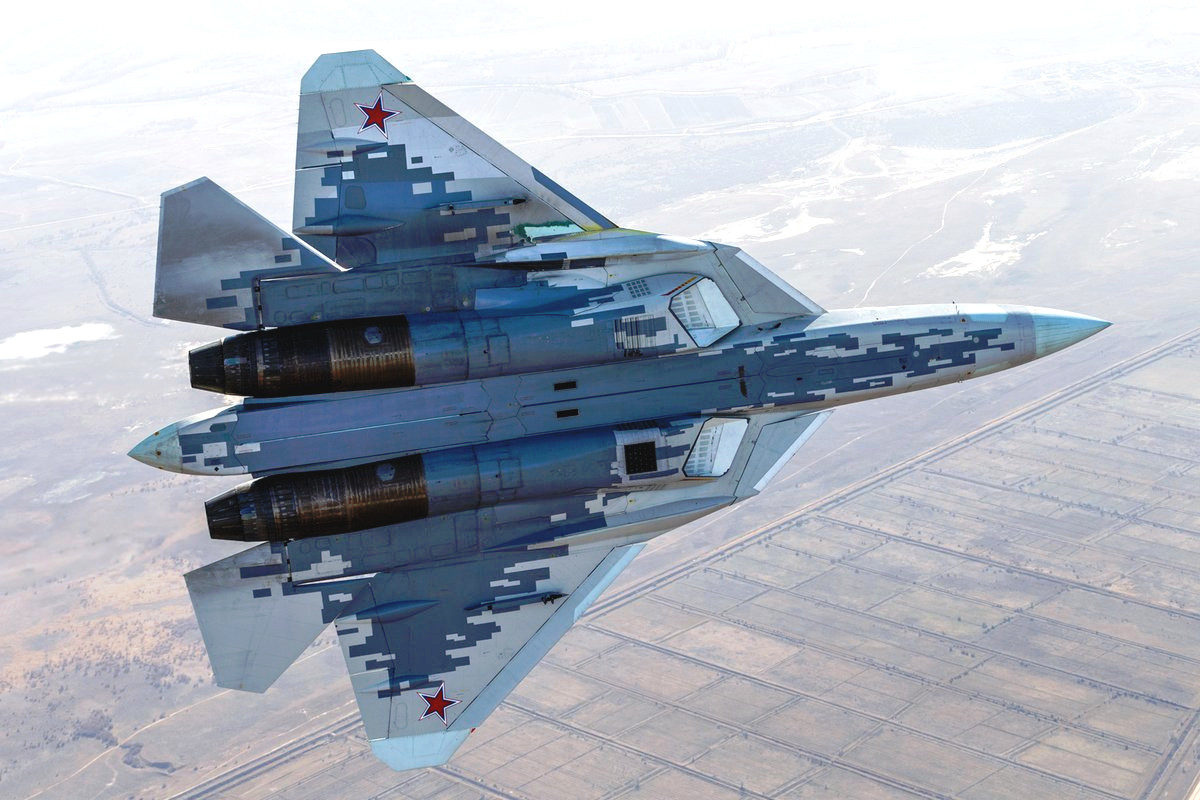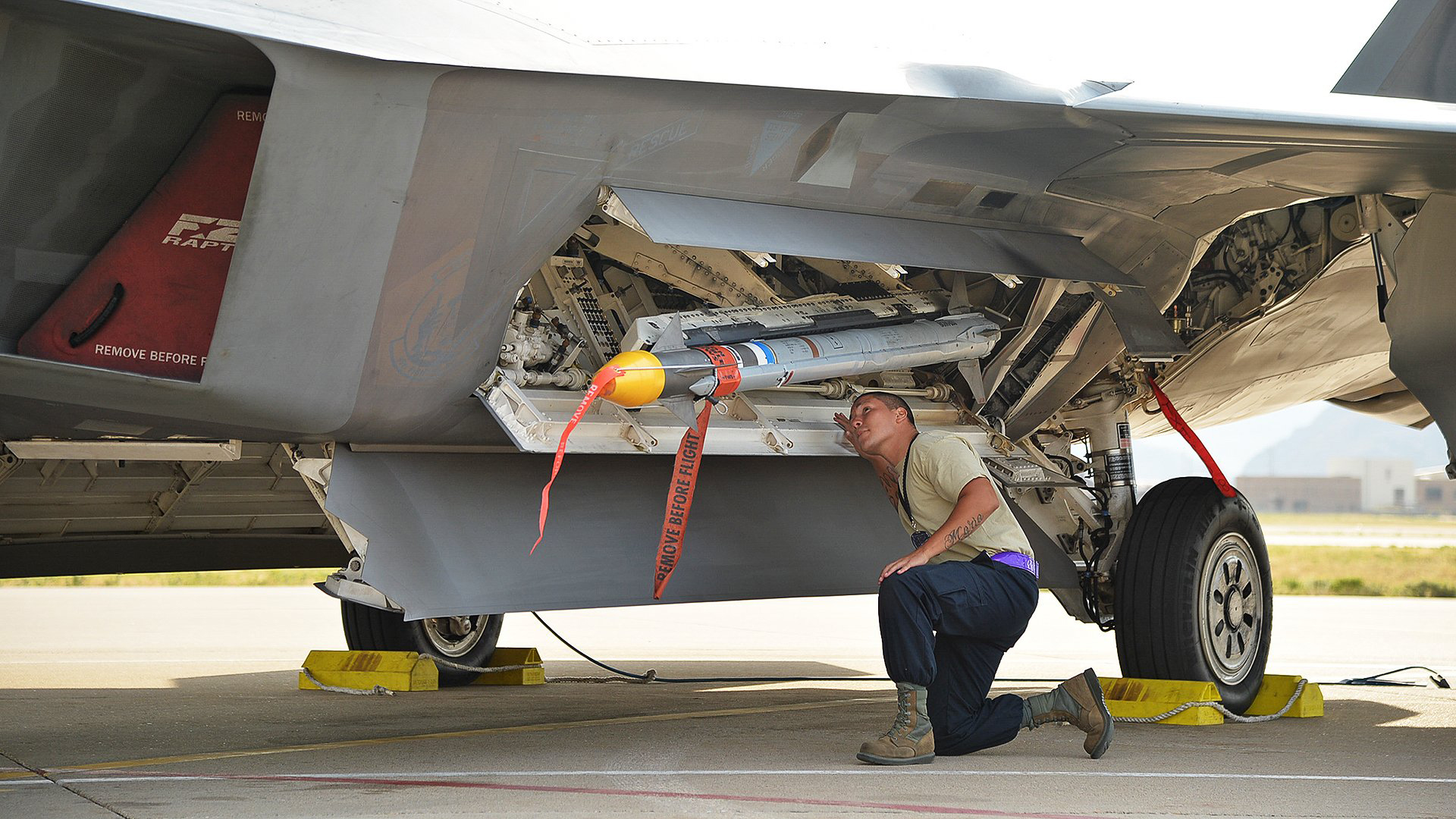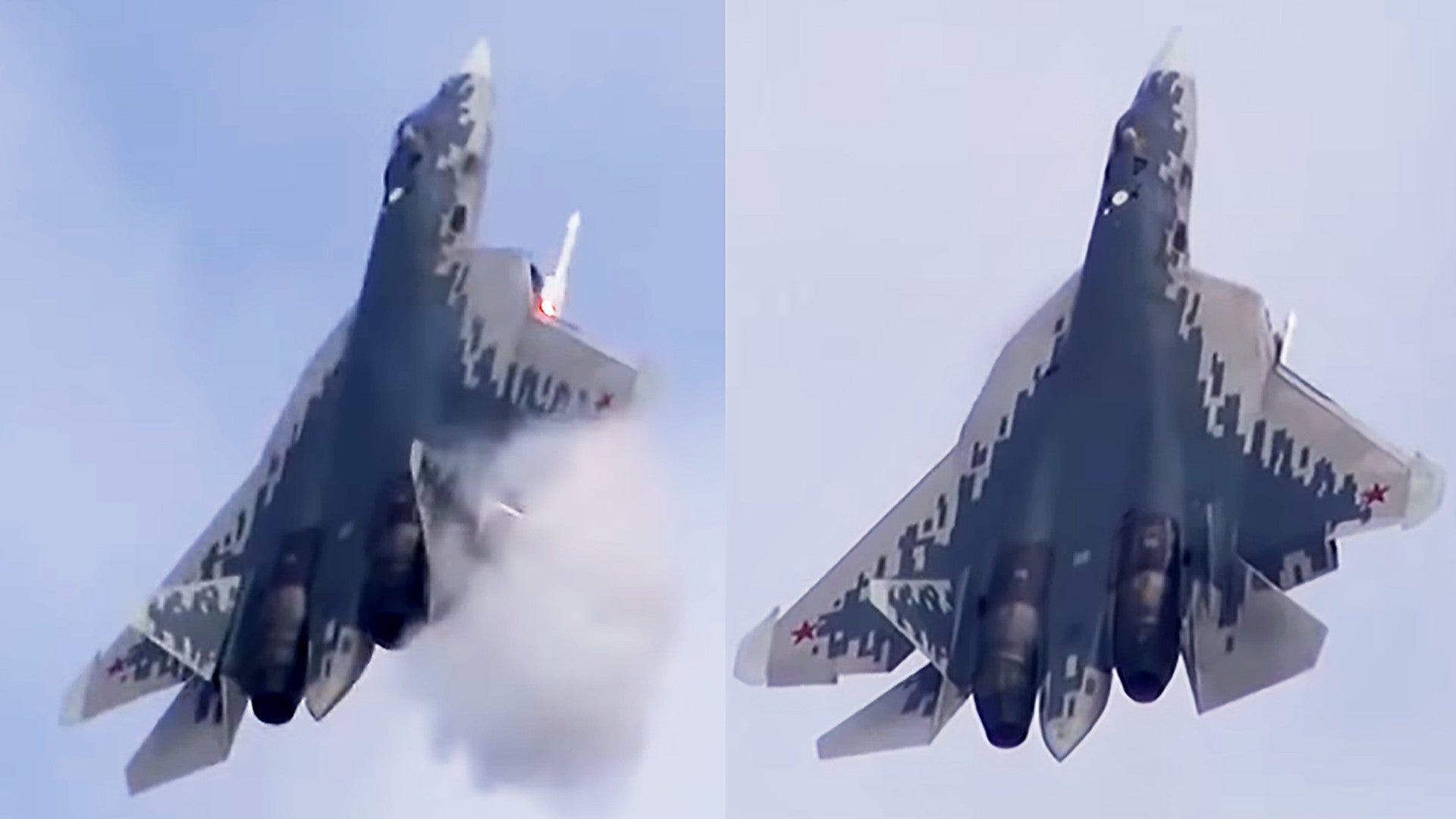The Russian Ministry of Defense has released a video montage with numerous clips of its pre-production Su-57s, including a previously unseen instance of one of the aircraft firing an air-to-air missile. At first glance, the clip appears to show the first known instance of the advanced combat jet firing a missile from one of its two small wing-root weapons bays, but upon closer examination, that may not be the case.
The video, which has the fantastical title “Beyond the laws of physics: the Russian ASF [Aerospace Forces] pilots have fully mastered Su-57 fighters,” first appeared on the Russian Ministry of Defense’s official YouTube channel on Mar. 24, 2020. This appears to have been in advance of the Day of Fighter Aviation of the Russian Air Force, which is Mar. 25.
The video’s release also comes some four months after images emerged of what appeared to be a new compact Russian air-to-air missile, derived, at least in part, from the medium-range R-77-series. Its overall size and other design elements suggested it could potentially be intended to fit inside the Su-57’s wing root bays. You can read The
War Zone‘s full analysis of this missile here.
So, it would certainly be interesting to finally see an Su-57 fire any missile from one of these bays, or even with these bays open at all. There has been no known imagery or video of the bays open since the aircraft was first shown to the public a decade ago.
The missile launch clip begins at approximately 1:19 in the runtime of the video below:

The Su-57 in the video fires what appears to be a short-range R-74/K-74-series. The weapon, including a portion of its body, is visible the entire time and there is no clearly discernable bay door seen. Not only is there no publicly available pictures of these wing root bays open, but there also isn’t any hard information about whether they are operational or how exactly they are supposed to work.

It is possible that a trapeze mechanism, similar broadly to the one the U.S. Air Force’s F-22 Raptors use to launch AIM-9 Sidewinder missiles from their cheek bays, might extend the missile outward from the wing root bays into the slipstream. The problem here is that it has long appeared that the R-74/K-74 series of missiles, as well as earlier R-73 models, are simply too bulky to fit inside the Su-57’s wing root bays, something The
War Zone
has pointed out in the past.

Fitting a trapeze mechanism, especially one able to extend the missile so far forward, into the bay could further reduce the available space inside the confines of the bay. There are reports that a low-profile version of the K-74, the K-74M2, has been in development, with a particular eye toward internal carriage on the Su-57. However, the fin configuration of the missile in the video looks unchanged from existing models.

The Su-57 may have some unique configuration inside the bays to recess the missile and its launch rail and then extend it for launch. There is no external evidence that it has bay doors that can close or partially close with the missile extended, similar to the novel design found on China’s J-20. It is possible, albeit very unlikely, that the mechanisms to do this are not clearly visible or not yet fitted on the small Su-57 fleet. It is more likely that the Su-57 in question has its bay doors removed for this test. It could even be using some sort of test pylon in this particular case. This would make sense if the smaller form factor variant of the K-74 is not available yet for internal carriage and testing.
Regardless, we know that the Russian Air Force is conducting various trials with their pre-production Su-57s and that it is exploring integrating new weapons and other systems onto these aircraft, especially with plans now to dramatically increase the size of the fleet and move the aircraft closer to a true operational capability. So far, the Russian Air Force has taken delivery of just over a dozen pre-production examples of these advanced combat jets since the type’s first flight in 2010. The Kremlin now has 76 of these jets on order, but the first serial production aircraft was destroyed in an accident in December 2019 in a major setback for the program.
All said, although the video is intriguing, there’s no clear proof that we have gotten our first look at one of the jets firing a missile from one of those internal bays. We may be seeing a step being taken to realize that aspirational capability, but until we have more information or other angles of the test in question, we can’t say for certain if these bays are operational or even exactly what missile will end up being fired out of them.
Contact the authors: joe@thedrive.com and tyler@thedrive.com
